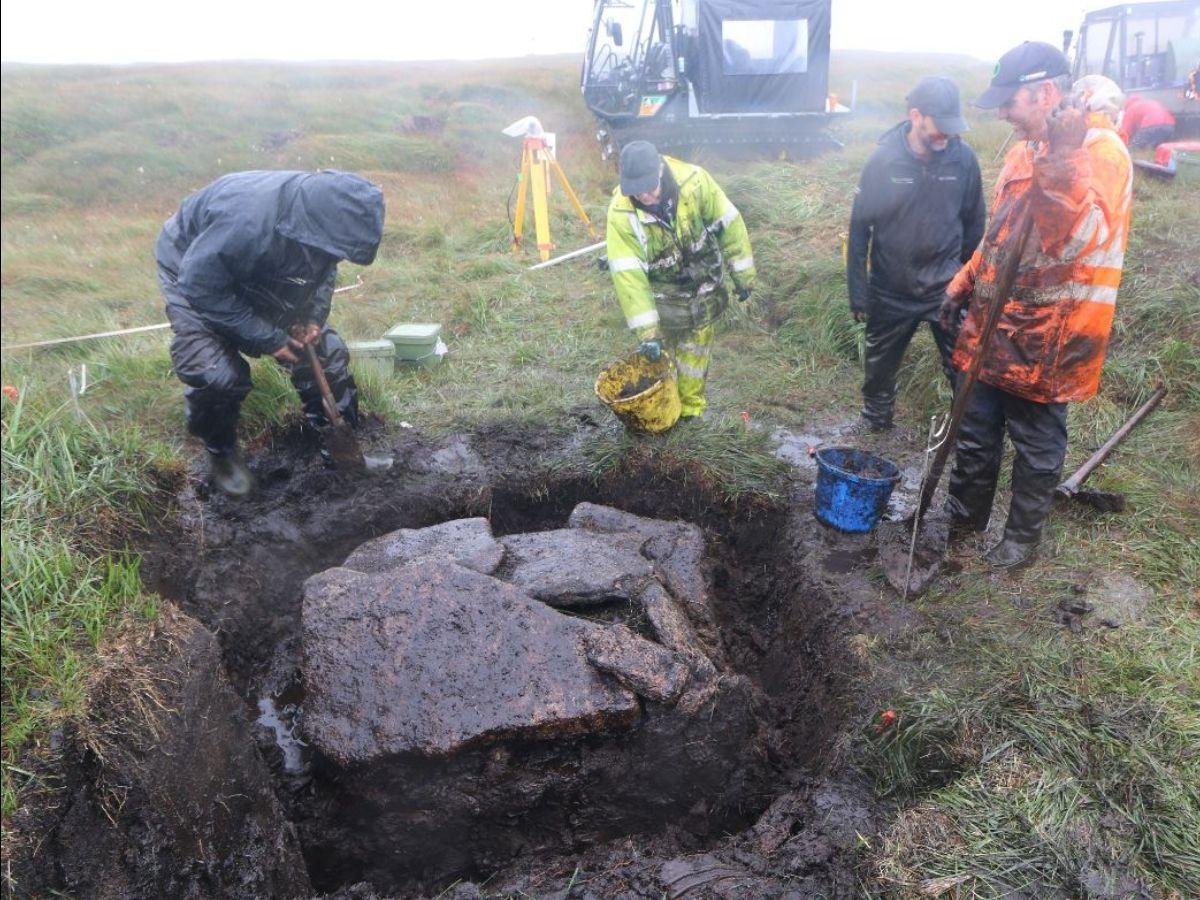Archaeologists from the Dartmoor National Park Authority have unearthed a Bronze Age burial chamber, known as a cist, on Cut Hill, an isolated hill within the park. This remarkable find could provide new insights into life on Dartmoor nearly 4,000 years ago.
 The burial cist is believed to be almost 4,000 years old. Credit: Alec Collyer
The burial cist is believed to be almost 4,000 years old. Credit: Alec Collyer
The burial chamber, constructed from stone slabs, was discovered following reports of a feature becoming visible in the peat. Archaeologist Dr. Lee Bray, who led the excavation, described the moment the team opened the cist as awe-inspiring. “We were all pretty speechless when we lifted the capstone and looked inside,” he said. “Not only is the cist bigger than we expected, but it contained multiple pieces of wood that appear to have been deliberately shaped and cut. This prompts more questions: could the wood have been an object that was dismantled and deliberately placed inside the grave? If so, what was it and who did it belong to?”
The chamber measures approximately one meter square and was topped with three large granite capstones. Inside, alongside the wooden fragments, archaeologists discovered various other materials that have yet to be identified. Radiocarbon dating of charcoal found within the cist suggests that it dates back to around 1800 BCE, making it nearly 3,900 years old.
The discovery has striking similarities to the 2011 excavation of a cist at Whitehorse Hill, also on Dartmoor, which contained the cremated remains of a young adult along with a range of artifacts, including a bearskin pelt, textiles, and a necklace made of beads crafted from materials like clay, shale, tin, and amber.
Like the Whitehorse Hill cist, the Cut Hill chamber was found in a boggy area, a location that, due to its waterlogged conditions, is excellent for preserving organic materials. “Bogs are oxygen-free, and their tannin-rich environment prevents decay, making them ideal for preserving ancient remains,” explained Ralph Fyfe, Professor in Geospatial Information at the University of Plymouth, who has been involved in both the Whitehorse Hill and Cut Hill excavations.
The Cut Hill cist is more than twice the size of the one found at Whitehorse Hill, suggesting the possibility of uncovering even more artifacts. Dr. Bray emphasized the meticulous care needed in the excavation process: “The volume of material under the wood reaches a depth of about 30cm, so there’s every chance it contains objects or artifacts we can’t see yet. The next stage is for micro-excavations to determine what’s in there. It’s very detailed work that’ll take time to complete, but we’re all very excited about it.”
This discovery is part of a larger project involving a collaboration of experts from various insтιтutions, including the Cornwall Archaeological Unit, the University of Leicester, and the University of Plymouth.
Looking ahead, the team plans to conduct further micro-excavations and analyses at the Wiltshire Conservation and Museums Advisory Service, where the cist has been moved. As Andy Jones from the Cornwall Archaeological Unit noted, “The current excavations have the potential to yield similarly exciting results, which will help us understand how people lived and died on Dartmoor nearly 4,000 years ago.”
Dartmoor National Park Authority





